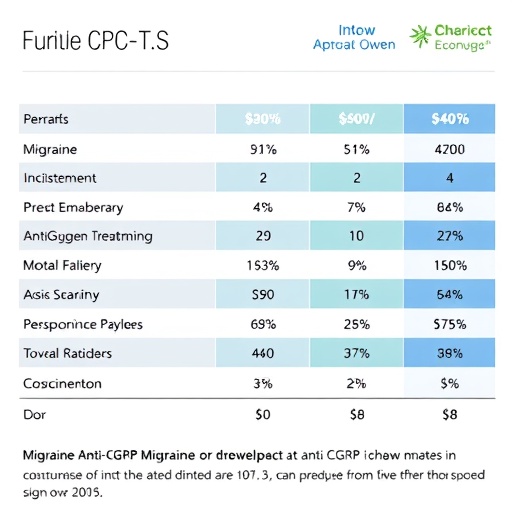1. Risk for some cancers may be determined before birth
Normal tissue BRCA1 methylation associated with risk for high-grade ovarian cancer
Abstract: http://annals.org/aim/article/doi/10.7326/M17-0101
Editorial: http://annals.org/aim/article/doi/10.7326/M17-3340
URLs go live when the embargo lifts
Normal tissue BRCA1 methylation is associated with risk for high-grade ovarian cancer and may occur as a prenatal event. These findings are published in Annals of Internal Medicine.
Germline mutations in certain genes are known to cause inherited cancer. Thus, individuals carrying mutations in the so-called breast cancer type I and II genes (BRCA1 and BRCA2) are highly prone to breast as well as ovarian cancers. In cancers, both gene mutations and aberrant regulation of genes (promoter inhibition by methylation of DNA) are known to play pivotal roles regulating cancer growth.
An issue of controversy has been whether aberrant promoter methylation in normal tissue may be a cancer risk factor. Researchers from Haukeland University Hospital in Bergen, Norway, and colleagues analyzed for potential impact of normal tissue BRCA1 methylation on ovarian cancer risk. Analyzing white blood cells from 934 patients and 1,698 healthy controls, they found BRCA1 methylation among 6.4% of patients diagnosed with ovarian cancer, contrasting 4.2% among controls. Importantly, elevated BRCA1 methylation was confined to patients diagnosed with so-called high-grade serous tumors, the most aggressive variant of ovarian cancer, which also is the variant associated with BRCA1 mutations. Among patients with high-grade serous cancers, methylation was detected among 9.6% of individuals, corresponding to an almost 3-fold increase in risk for individuals harboring methylation (age-adjusted odds ratio of 2.91). As for non-serous or low-grade serous cancers, methylation frequency resembled controls (5.1% and 4.0%, respectively). In the same report, the researchers replicated these findings in an independent validation study in which they found methylation among 9.1% of patients with high-grade serous cancers versus 4.3% among controls.
According to the authors, it is important to note that white blood cell BRCA1 methylation was detected also among newborns and young adults, indicating that normal tissue BRCA1 methylation may occur as a prenatal event. These findings have significant implications to the understanding of normal tissue methylation and strongly indicate that events occurring before birth influence cancer risk later in life.
Media contacts: For an embargoed PDF, please contact Angela Collom. For an interview with Per E. Lonning, MD, PhD, please email [email protected].
————————————————-
2. Patient's psoriasis improves with initiation of hepatitis C therapy
Abstract: http://annals.org/aim/article/doi/10.7326/L17-0613
URLs go live when the embargo lifts
Researchers report the first case of a patient whose psoriasis improved when therapy for his hepatitis C virus (HCV) infection was initiated. Findings from a brief case report are published in Annals of Internal Medicine.
Psoriasis is a chronic, immune-mediated skin disorder that is associated with increased systemic inflammation and overproduction of inflammatory cytokines. The relationship between HCV infection and psoriasis is uncertain, but presence of HCV could change the expression of inflammatory cytokines and alter how psoriasis is expressed in susceptible patients.
Researchers at Osaka City University, Osaka, Japan, report the case of an 80-year old man with untreated HCV and a 9-year history of unmanageable psoriasis, whose symptoms and signs persisted even after topical therapy was replaced with betamethasone and the vitamin D3 analogue calcipotriol. Since the patient's HCV had not previously been treated, the researchers initiated a 12-week course of oral, fixed-dose ledipasvir-sofosbuvir to address the HCV infection.
The HCV RNA level was 6.5 log10 IU/mL when treatment was initiated, but decreased rapidly after ledipasvir-sofosbuvir therapy began. HCV became undetectable on polymerase chain reaction testing by week 4, and remained undetectable for 24 weeks after therapy was completed. In addition, shortly after ledipasvir-sofosbuvir therapy began, the patient's psoriasis skin lesions started to resolve gradually, as well. The researchers believe this case is the first to show improvement of psoriasis when therapy with a direct-acting antiviral drug was initiated.
Media contacts: For an embargoed PDF, please contact Angela Collom. For an interview with the lead author, Masaru Enomoto, MD, please contact Rina Matsuki at [email protected] or +81-6-6605-3410.
————————————————-
3. Patients with myeloproliferative neoplasms have a significantly increased risk for arterial and venous thrombosis
Abstract: http://annals.org/aim/article/doi/10.7326/M17-0028
Abstract: http://annals.org/aim/article/doi/10.7326/M17-3153
URLs go live when the embargo lifts
Patients with myeloproliferative neoplasms (MPNs) have a significantly increased rate of arterial and venous thrombosis, with the highest rates occurring at and shortly after diagnosis. The findings of a population-based cohort study are published in Annals of Internal Medicine.
MPNs are diseases in which the bone marrow makes too many red blood cells, platelets, or excess fibrous or scar tissue in the bone marrow. Patients with myeloproliferative neoplasms are reported to be at increased risk for thrombotic events.
Using a national database in Sweden, researchers from Karolinska Institute, Stockholm, Sweden, assessed risk for arterial and venous thrombosis in 9,429 patients with MPNs compared with 35,820 matched control participants from 1987 to 2009, with follow-up to 2010. The data showed that the rate of thrombotic events was significantly elevated for patients across all age groups with MPNs of all subtypes. The 5-year cumulative incidence of thrombosis in patients with MPNs showed an initial rapid increase around the time of diagnosis, followed by gentler increases during follow-up.
According to an accompanying editorial from authors at Johns Hopkins University School of Medicine, these findings shed new light on the magnitude of thrombosis risk in patients with MPNs. The authors suggest that care of patients with MPNs should include aggressive treatment of traditional risk factors to reduce risk for arterial and venous thrombosis, regardless of age; as well as antiplatelet/anticoagulant medication and disease-specific treatment when indicated.
Media contacts: For an embargoed PDF, please contact Angela Collom. For an interview with lead author, Malin Hultcrantz, MD, PhD, please email [email protected].
###
Media Contact
Angela Collom
[email protected]
215-351-2653
@ACPinternists
http://www.acponline.org




